
Nights into Dreams is a 1996 action game developed by Sonic Team and published by Sega for the Sega Saturn. The story follows the teenagers Elliot Edwards and Claris Sinclair, who enter Nightopia, a dream world where all dreams take place. With the help of Nights, an exiled "Nightmaren", they begin a journey to stop the evil ruler Wizeman from destroying Nightopia and consequently the real world. Players control Nights flying through Elliot and Claris's dreams to gather enough energy to defeat Wizeman and save Nightopia. The game is presented in 3D and imposes time limits on every level, in which the player must accumulate points to proceed.
Sonic Team is a video game developer owned by the Japanese video game company Sega as part of its Sega CS Research and Development No. 2 division. Sonic Team is best known for its namesake long-running Sonic the Hedgehog series and games such as Nights into Dreams and Phantasy Star Online.
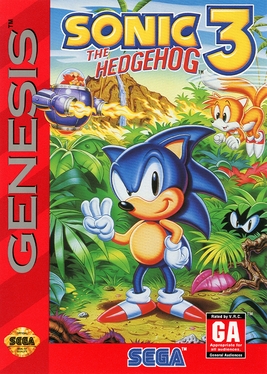
Sonic the Hedgehog 3 is a 1994 platform game developed and published by Sega for the Genesis. Like previous Sonic games, players traverse side-scrolling levels while collecting rings and defeating enemies. They control Sonic and Tails, who attempt to retrieve the Chaos Emeralds to stop Doctor Robotnik from relaunching his space station, the Death Egg, after it crash-lands on a mysterious floating island. Sonic 3 introduces Knuckles the Echidna, the island guardian, who lays traps for Sonic and Tails.
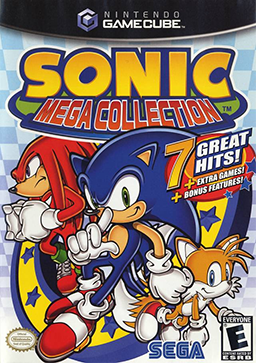
Sonic Mega Collection is a video game compilation developed by Sonic Team and published by Sega in 2002 for the GameCube. It is a compilation of several Sonic the Hedgehog games originally released for the Genesis, along with a few other Sega-published titles for the system.

Sonic Adventure is a 1998 platform game developed by Sonic Team and published by Sega for the Dreamcast. It was the first main Sonic the Hedgehog game to feature 3D gameplay. It follows Sonic the Hedgehog, Miles "Tails" Prower, Knuckles the Echidna, Amy Rose, Big the Cat, and E-102 Gamma in their quests to collect the Chaos Emeralds and stop Doctor Robotnik from unleashing Chaos, an ancient evil. Controlling one of the six characters—each with their own abilities—players complete levels to progress the story. Sonic Adventure retains many elements from prior Sonic games, such as power-ups and the ring-based health system. Players can play minigames such as racing and interact with Chao, a virtual pet.

Sonic the Hedgehog is a 1991 platform game developed by Sonic Team and published by Sega for the Genesis/Mega Drive. It was released in North America on June 23 and in PAL regions and Japan the following month. Players control Sonic the Hedgehog, who can run at near supersonic speeds; Sonic sets out on a quest to defeat Dr. Robotnik, a scientist who has imprisoned animals in robots and seeks the powerful Chaos Emeralds. The gameplay involves collecting rings as a form of health, and a simple control scheme, with jumping and attacking controlled by a single button.

Sonic the Hedgehog CD is a 1993 platform game developed and published by Sega for the Sega CD. As Sonic the Hedgehog, the player attempts to protect an extraterrestrial body, Little Planet, from Doctor Robotnik. Like other Sonic games, Sonic runs through themed levels while collecting rings and defeating robots. Sonic CD introduces time travel as a game mechanic. By traveling through time, players can access different versions of stages, featuring alternative layouts, music, and graphics.

Yuji Naka, credited in some games as YU2, is a former Japanese video game programmer, designer and producer. He is the co-creator of the Sonic the Hedgehog series and was the president of Sonic Team at Sega until his departure in 2006.
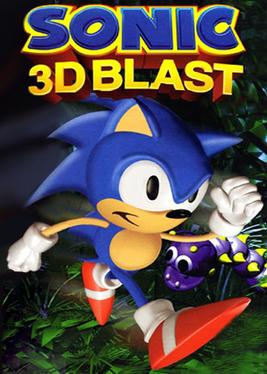
Sonic 3D Blast, known in Europe and Japan as Sonic 3D: Flickies' Island, is a 1996 platform game in the Sonic the Hedgehog series for the Sega Genesis and Sega Saturn. As Sonic the Hedgehog, the player embarks on a journey to save the Flickies, birds enslaved by Doctor Robotnik. The player must guide Sonic through a series of themed levels to collect Flickies and defeat Robotnik. Though it retains game mechanics from prior Sonic games, Sonic 3D Blast is differentiated by its 2D isometric perspective, with pre-rendered 3D models converted into sprites.

Sonic & Knuckles is a 1994 platform game developed and published by Sega. Players control Sonic the Hedgehog or Knuckles the Echidna in their quests to save Angel Island; Sonic tries to stop Doctor Robotnik from re-launching his orbital weapon, the Death Egg, while Knuckles scuffles with Robotnik's minion, EggRobo. Like previous Sonic games, players traverse side-scrolling levels at high speeds while collecting rings and defeating enemies.

Knuckles' Chaotix is a 1995 platform game developed by Sega for the 32X. A spin-off from the Sonic the Hedgehog series, it features Knuckles the Echidna and four other characters known as the Chaotix, who must prevent Doctor Robotnik and Metal Sonic from obtaining six magic rings and conquering a mysterious island. Gameplay is similar to previous Sonic games: players complete levels while collecting rings and defeating enemies. Knuckles' Chaotix introduces a partner system whereby the player is connected to another character via a tether; the tether behaves like a rubber band and must be used to maneuver the characters.
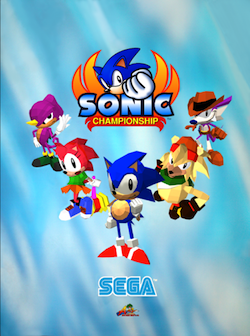
Sonic the Fighters, also known as Sonic Championship on arcade versions outside Japan, is a fighting game developed by Sega AM2. First released in 1996 in arcades on Sega's Model 2 arcade system, Sonic the Fighters pits players in one-on-one battles with a roster of characters from the Sonic the Hedgehog series.
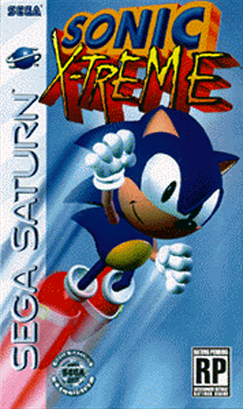
Sonic X-treme was a platform game developed by Sega Technical Institute from 1994 until its cancellation in 1996. It was planned as the first fully 3D Sonic the Hedgehog game, taking Sonic into the 3D era of video games, and the first original Sonic game for the Sega Saturn. The storyline followed Sonic on his journey to stop Dr. Robotnik from stealing six magic rings from Tiara Boobowski and her father. X-treme featured open levels rotating around a fixed center of gravity and, like previous Sonic games, featured collectible rings and fast-paced gameplay.

Sonic R is a 1997 racing game developed by Traveller's Tales and Sonic Team and published by Sega for the Sega Saturn. It is the third racing game in the Sonic the Hedgehog series, and the first to feature 3D computer graphics. The player races one of ten Sonic characters in various Sonic-themed race tracks as they attempt to stop Doctor Robotnik from stealing the Chaos Emeralds and enslaving the world. Sonic R features single-player and multiplayer game modes, and while similar to kart racing games such as Mario Kart, it places an emphasis on jumping and exploration. By collecting items and completing objectives, players can unlock secret characters.
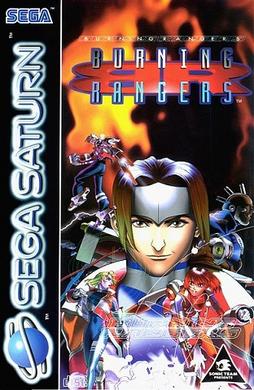
Burning Rangers is a 1998 action game developed by Sonic Team and published by Sega for the Sega Saturn. Players control one of an elite group of firefighters, the Burning Rangers, who extinguish fires and rescue civilians in burning buildings in a futuristic society. Most of the tasks involved collecting energy crystals to transport civilians to safety. In lieu of an in-game map, Burning Rangers features a voice navigation system which directs players through corridors.

Sonic Gems Collection is a 2005 compilation of Sega video games, primarily those in the Sonic the Hedgehog series. The emulated games span multiple genres and consoles—from the Sega Genesis to the Sega Saturn—and retain the features and errors of their initial releases with minimal edits. Player progress is rewarded with demos of other Sonic games, videos, and promotional artwork spanning the history of the Sonic franchise. While its 2002 predecessor, Sonic Mega Collection, comprises popular Sonic games, Gems Collection focuses on more obscure games, such as Sonic CD (1993) and Sonic the Fighters (1996). Other non-Sonic games are included, but some, such as the Streets of Rage trilogy, are omitted in the Western localization.

Sonic the Hedgehog is a video game series and media franchise created by the Japanese developers Yuji Naka, Naoto Ohshima, and Hirokazu Yasuhara for Sega. The franchise follows Sonic, an anthropomorphic blue hedgehog who battles the evil Doctor Eggman, a mad scientist. The main Sonic the Hedgehog games are platformers mostly developed by Sonic Team; other games, developed by various studios, include spin-offs in the racing, fighting, party and sports genres. The franchise also incorporates printed media, animations, feature films, and merchandise.
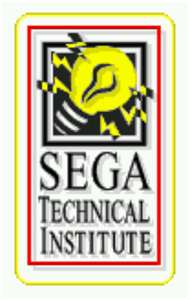
Sega Technical Institute (STI) was an American video game developer owned by Sega. Founded by the Atari veteran Mark Cerny in 1990, STI sought to combine elite Japanese developers, including the Sonic Team programmer Yuji Naka and his team, with new American talent. STI developed games for Sega Genesis, including several Sonic the Hedgehog games, before it was closed at the end of 1996.

Sonic the Hedgehog 2 is a 1992 platform game developed by Sega Technical Institute (STI) for the Sega Genesis. Players control Sonic as he attempts to stop Doctor Robotnik from stealing the Chaos Emeralds to power his space station. Like the first Sonic the Hedgehog (1991), players traverse side-scrolling levels at high speeds while collecting rings, defeating enemies, and fighting bosses. Sonic 2 introduces Sonic's sidekick Miles "Tails" Prower and features faster gameplay, larger levels, a multiplayer mode, and special stages featuring pre-rendered 3D graphics.



















